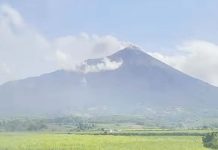
[av_one_full first min_height=” vertical_alignment=” space=” custom_margin=” margin=’0px’ padding=’0px’ border=” border_color=” radius=’0px’ background_color=” src=” background_position=’top left’ background_repeat=’no-repeat’ animation=”]
[av_heading heading=’ACCENTS ‘ tag=’h3′ style=’blockquote modern-quote’ size=’30’ subheading_active=’subheading_below’ subheading_size=’15’ padding=’10’ color=” custom_font=”]
BY JULIA CARREON-LAGOC
[/av_heading]
[av_textblock size=” font_color=” color=”]
Thursday, September 7, 2017
[/av_textblock]
[av_textblock size=’18’ font_color=” color=”]
COULD there be a midnight at high noon? Yes, and I’m affirming this with a calm, cool and collected “I -witness” account in any court of law. It happened on August 21, 2017 — significantly printed 8.21.17 on the T-shirt that I bought in Orangeburg, a city in South Carolina — a most memorable State in the U.S. of A., at least to me.
The day before, David, my daughter Randy’s better-half, searched for the best site in the whole of America with which to view the total solar eclipse. The result: Orangeburg, a three-hour drive from their residence in Bluffton, South Carolina. The specific place: South Carolina State University where we were one of the families that converged in the huge University Stadium.
A souvenir that I still have in my desk is the spectacle labeled ECLIPSE SHADES, given free to all who came for the great event. Now I have all the time to read what’s written at the back of the specs: “INSTRUCTIONS FOR USE: Wear your Eclipse Shades to protect your eyes from solar radiation any time you look at the Sun or the Sun’s reflection. When looking at a solar eclipse, use your Eclipse Shades whenever ANY PART of the Sun, no matter how small is visible. This product should not be used with any other optical appliances such as cameras, telescopes or binoculars. This product is not a toy. Children should use only with adult supervision.”
On the other side of the specs is a “WARNING: NEVER LOOK AT THE SUN WITHOUT SPECIAL EYE PROTECTION. DO NOT USE IF DAMAGED. Using damaged Eclipse Shades can result in severe eye injury. BEFORE EACH USE: Check front and back of each lens for damage such as scratches, pinholes or separation from frames. If damaged, cut into small pieces and discard. DO NOT attempt to clean or disinfect. (Under general conditions of use, this should not be necessary).”
Why do I write all these here? Because my daughter Randy said that in 2042, the total solar eclipse will be viewed in our part of the globe, the Philippines. You may check her findings. To be knowledgeable is to be prepared. Knowledge is power, goes the cliché. But where will I be in 2042? I will be 106 years old by that time. Will this centenarian still have the breath of life by then? Or, I’m already up there in high heavens in the company of my dear departed Rudy, a human rights lawyer.
Prior to the climactic moment, a gigantic white balloon was hoisted in the middle of the University Stadium — untied to soar up high, getting smaller and smaller until it disappeared from our sight. It was a weather balloon in a science experiment related to the eclipse. The Emcee had a resounding command of the ceremonies which included the University’s marching band that prepped up the audience. And there was the Professor (I failed to get her name) who briefed us on the forthcoming mesmerizing wonder of the Universe that, thankfully, Science can explain. In the ancient past, children were foolishly told that the Sun and the Moon were engaged in a wedding — “A Tale Told by an Idiot” if I have to mock via Shakespeare. To the Scientists, bravo for throwing superstitions, prognostications, and the like into the garbage bin.
The clouds gave way as the Sun ever so slowly went into the shape of a crescent. From the heat of high noon, the atmosphere grew cooler and cooler, the Stadium lights dimmer and dimmer. There was hushed silence. Finally, the totality of it all, and never more was the audience rapt in unity. On that very day, it was most fitting that I wore my favorite green T-shirt boldly blaring the words: ONE LOVE — ONE CHANCE — ONE WORLD — ONE EARTH.
In the span of the night sky, we saw the planets Mercury and Venus predominant in the tiny glitter of stars. My granddaughter Danika, who dreams to be an astrophysicist, shed tears in sheer amazement. That midnight at Orangeburg was an experience of a lifetime. (juliaclagoc@yahoo.com)
***
Julia Carreon-Lagoc was a columnist of Panay News for two decades. She pops up with Accents now and then.
Midnight in the Garden of Good and Evil is a non-fiction work by John Berendt. The book, Berendt’s first, was published in 1994. It became a New York Times Best-Seller for 216 weeks following its debut and remains the longest-standing New York Times Best-Seller./PN
[/av_textblock]
[/av_one_full]







